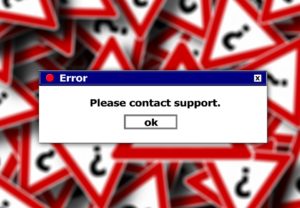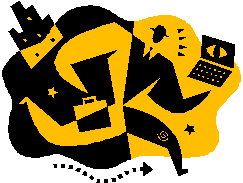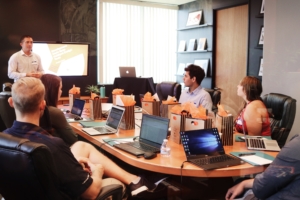Now is the Time to Prepare for the Uptick In 2025: Leveraging Opportunity & Setting Your Direction
By David Shaffer, MBA, Sr. Consultant
News item: Economists, investors and the Federal Reserve have sounded alarm bells for months that a recession could come later this year. According to CNN, here are predictions from three financial institutions:

by Thomas Breher
• Bank of America CEO Brian Moynihan told CNN that he believes the US economy could tip into a recession early next year.
• Vanguard economists wrote in their mid-year outlook that they see a high probability of recession, and the “odds have risen that it could be delayed from 2023 to 2024.”
• JPMorgan Chase economists said that there could be a “synchronized global downturn sometime in 2024.”
Investors and economists last year predicted that the US could enter a recession in early 2023, after the Fed set out on its aggressive interest rate hiking campaign to tame inflation.
As we enter the fourth quarter of 2023, most organizations turn their attention to reviewing the success/issues of the current year and try to determine the appropriate focus for the upcoming year and beyond.
With uncertainty comes opportunity if a company can define strategies that incorporate its strengths and recognizes its weaknesses.
With political uncertainty and the rebound from Covid-19, this year more than ever companies are looking into the mirror to see how best to position for uncertainty. This becomes the element of strategic planning that focuses on a realistic assessment of the current environment and a projection of what an optimal future target operating model should look like.
The process of strategic planning we recommend provides an initial, objective assessment and facilitates the strategic planning necessary to meet future opportunities. This planning should focus on the definition and implementation of critical initiatives that project alternatives based upon projected potential scenarios.
What differentiates us is our ability to recognize the resources available, integrate financial scenarios, and develop a process that provides well-defined milestones and deliverables. The planning is designed to leverage the businesses’ capabilities into value creation thereby creating future options for stakeholders and owners.
Most companies schedule their management retreat to develop and establish the strategic direction for the remainder of the year, as well as a three-to-five-year outlook.
The process, although it can contribute to team building by getting away from the daily grind, frequently does not result in strategy. That’s because what starts as a noble intention or cause ends with little to no accountability, letting life return to normal soon after the planning meeting. Effective strategic planning implementation requires accountability both in the creation and management of strategic initiatives.
Here is practical and accountable approach to effective strategic planning and implementation:

by Mario Aranda
Step One. Develop Strategic Initiatives. Many times there is confusion between what initiatives are truly strategic versus what are simply tasks and obstacles that impact the daily operating procedure.
As an example of what not to do: one company identified distribution of various financial reports as a strategic means of raising financial performance. Although the concept may sound strategic it is merely an improvement in task execution, addressing an operational issue rather than a strategy that aligns with the direction of the company.
Here is what you should do: Your strategic planning session should generate and classify two types of initiatives.
1. A few critical initiatives expected to be implemented in the short term, within the current fiscal year
2. A few growth initiatives, requiring more exploration in order to lay the foundation for future critical initiative consideration.
Organizations that define more than five to six critical initiatives are generally focused on task implementation rather than strategy. Likewise, exploration of more than two to three growth initiatives represents a strategic planning outcome that has no direction or focus.
Step Two. Assign Accountability. Once both critical and growth initiatives have been defined, individual project managers should be assigned to lead the charge, plan the implementation, drive the process and communicate the results. The use of chartering is a process commonly used by project managers that allows organizations to clearly convert strategy into action while managing accountability.
For each strategic initiative a charter is written, reported against and reviewed regularly by the management team. It is important to note that as a result of exploration efforts, growth initiatives can often become new critical initiatives that require project managers and charters.
Step Three. Build Strategic Project Charters. Multiple resources are typically used to implement each strategic initiative. However, it is essential that one individual have responsibility and accountability for each project and project charter.
The aggregate of strategic initiatives and associated charters represent the short term and long-term implementation of the key strategies. Although they are prepared and managed by different individuals, it is important that the approach is consistent.
So just what does one include in a charter? Let’s take a deeper look:
Background. Description and facts related to the problem, opportunity or situation that the project is going to address. The background lays out the context of the charter; however the details of the charter are laid out in subsequent sections. The background should refer to discussions generated during the strategic planning session.

by Skeeze
Key Challenges. In every endeavor there are generally challenges. This section provides a description of the challenges, obstacles and issues that must be overcome in order to successfully complete the charter (project) and to deliver the benefits. This is not a description of the tasks, even though carrying out the tasks may be challenging.
Project Overview And Rationale Description of what the project will accomplish at a high level, and a list of the project objectives and business benefits.
Brief example: The objective of this project is to develop and implement a new, automated sales order entry system. The new system should reduce the time to configure and enter a new order from four hours to approximately 20 minutes (objective). It will significantly reduce order entry errors, increase sales and improve customer satisfaction (benefits).
Approach. Description of how the project will be carried out: the team, methodology, and timeframe for carrying out the project. The description should be a high level and should not duplicate the list of milestones or major deliverables.
Scope. Description of the boundaries of the project: what it will and will not address.
Major Milestones. Milestones should reflect the overall approach and should cover the complete lifecycle of the project. The list of milestones does not however constitute a complete project plan. Milestones will be changed and should be updated when the project plan is completed.
Start Date: xx/xx/xxxx End Date: xx/xx/xxxx
First Major Milestone: xx/xx/xxxx
• Major Action: xx/xx/xxxx
Middle Target Date xx/xx/xxxx
• Major Action: xx/xx/xxxx
• Major Action: xx/xx/xxxx
Milestone close to completion: xx/xx/xxxx
Major Deliverables. List of specific accomplishments, documents, or other tangible outputs of the project. Deliverables are not the same as objectives or business benefits. The deliverables may duplicate some of the major milestones (i.e., the completion of a deliverable could be a milestone.)
Stakeholders and Resources
• Customer: [Group that will directly benefit from this project. Could be an internal or external customer or stakeholder group. Be specific.]
• Sponsor: [Executive who has overall responsibility for the project. Approves the charter and budget. Heads up Steering Committee as needed.]
• Project Manager: [Manager with responsibility for the leadership and day-to-day management of the project.]
• Outside Resources: [As needed.]
• Team Members: [Resources assigned to the project who will participate throughout the project. Do not include SMEs (subject matter experts) or other resources that work on specific tasks or are consulted with during the project.]
Project Budget:
Training materials: $ X
Marketing materials: $ Y
Outside resources: $ Z
Assumptions, Constraints and Concerns
by rawpixel
Assumptions:
• [Events or conditions that must be in place in order for the project to start or to be completed.]
• E.g. new marketing manager must be hired and in place by no later than 6/1.
Constraints:
• [Limitations that the project must adhere to.]
Concerns:
• [Events or conditions that may occur, that would impact the successful completion of the project.]
• E.g., If the pending acquisition closes before 7/31, some of our team resources may be pulled into the integration effort.
The assumptions, constraints and concerns must be specific to the project – not conditions that are necessary for any project. Examples of conditions that should not be listed are:
• Having adequate budget, resources and strong support from leadership. (True for any project.)
• No major economics or business disruptions. (True for any project.)
Step Four. Monitor And Communicate Progress. Many organizations struggle with the implementation of key initiatives; accountability is frequently a major stumbling block. By assigning Project Managers and the consistent use of project chartering, project plans can be well defined, resourced and monitored. The aggregate results of the charters collectively address the implementation of defined key initiatives. It is customary that on a weekly basis, each Project Manager reports the status of their charter so that combined project plans are managed by a single source. That is, for quality and consistency the overall progress of the initiatives is maintained in a central repository accessible to the entire management & leadership team.
There are many ways to distill strategic planning into execution. Chartering is a great way to focus on execution while creating accountability and buy-in throughout the process.

by Hans
The Economic Outlook For An Uptick In 2025 To 2030
The US Congressional budget Office predicts the economy will continue to expand during the second half of the decade. Output should grow at an average annual rate of 2.1 percent over the 2025–2030 period—faster than the 1.8 percent average annual growth of potential output. The unemployment rate should continue to drift downward, reaching 4.4 percent by the end of 2030. Inflation should be stable during the 2025–2030 period.
If you are open to a conversation about how to develop your next strategic plan to prepare the recession and coming uptick, or how our in-depth work style and personality assessment could help your team, please contact us at 310-453-6556, extension 403 or email us at dana@lighthouseconsulting.com and our website is www.lighthouseconsulting.com.
Recent Open Line event on this Topic
We recently had an Open Line event on this topic with David Shaffer… to see the webinar, please click the link below:
Preparing for the 2024 Potentially Mild Recession & the Uptick In 2025 – Leveraging Opportunity And Setting Your Direction
https://lighthouseconsulting.com/openline/081723/OpenLine081723.mp4
David Shaffer is our practice head for our Business Consulting For Higher Productivity Division for our ERP, M&A and process improvement practice. He is recognized for his ability to effectively integrate all aspects of the business, including financial management, information systems, infrastructure, sales management, sales strategies, and operations. David assists companies from planning through operational and business process improvement opportunities to the selection and integration of management information systems solutions. His range of company support includes start-ups through Fortune 500 firms.
Lighthouse Consulting Partners, LLC
Testing Division provides a variety of services, including in-depth work style & personality assessments for new hires & staff development. LCP can test in 19 different languages, skills testing, domestic and international interpersonal coaching and offer a variety of workshops – team building, interpersonal communication.
Business Consulting for Higher Productivity Division provides stress & time management workshops, sales & customer service training and negotiation skills, leadership training, market research, staff planning, operations, ERP/MRP selection and implementation, refining a remote work force, M&A including due diligence – success planning – value creation and much more.
To order the books, “Cracking the Personality Code”, “Cracking the Business Code” and “Cracking the High-Performance Team Code”, please go to www.lighthouseconsulting.com.
Permission is needed from Lighthouse Consulting Partners, LLC to reproduce any portion provided in this article. © 2024


 siblings, pets, or a close group of friends. They probably sacrifice for them and spend most of their free time with them.
siblings, pets, or a close group of friends. They probably sacrifice for them and spend most of their free time with them. An “I’m sorry” gift doesn’t necessarily have to cost a lot; it depends on how big the mistake was.
An “I’m sorry” gift doesn’t necessarily have to cost a lot; it depends on how big the mistake was.
























 An accurate assessment by a sales performance expert with detailed findings and recommendations
An accurate assessment by a sales performance expert with detailed findings and recommendations


 Lighthouse Consulting Services can help you take some time to review your culture and confirm if it fits not only the current personality of your organization but also the personality you want within the company. Together we can make sure that everyone understands the expected behaviors and how to create alignment with how to execute on them.
Lighthouse Consulting Services can help you take some time to review your culture and confirm if it fits not only the current personality of your organization but also the personality you want within the company. Together we can make sure that everyone understands the expected behaviors and how to create alignment with how to execute on them. The gas station metaphor is about eliminating a wasted trip. But in the business world, wasteful workflow processes are much less visible than that trip to the gas station. Historically, many businesses have learned to accept the non-value-added work throughout the enterprise. That is a gross miscalculation.
The gas station metaphor is about eliminating a wasted trip. But in the business world, wasteful workflow processes are much less visible than that trip to the gas station. Historically, many businesses have learned to accept the non-value-added work throughout the enterprise. That is a gross miscalculation. According to an opinion piece in The New York Times, Amazon is different than most businesses. Here is an excerpt from the article “The Secret of Amazon’s Success” that ran November 19, 2018 by economist William Lazonick, president of the Academic-Industry Research Network:
According to an opinion piece in The New York Times, Amazon is different than most businesses. Here is an excerpt from the article “The Secret of Amazon’s Success” that ran November 19, 2018 by economist William Lazonick, president of the Academic-Industry Research Network: Processes and workflows are similar, but they are not the same. A process is a set of repeatable activities that need to be continued to complete a specific goal that an organization has set. Workflow is series of repeatable activities that need to be continued to complete a specific task.
Processes and workflows are similar, but they are not the same. A process is a set of repeatable activities that need to be continued to complete a specific goal that an organization has set. Workflow is series of repeatable activities that need to be continued to complete a specific task. Streamlining is a journey, not just a onetime process. Your workflow processes might be improved by technology, but you are only as good as the team working the process.
Streamlining is a journey, not just a onetime process. Your workflow processes might be improved by technology, but you are only as good as the team working the process.